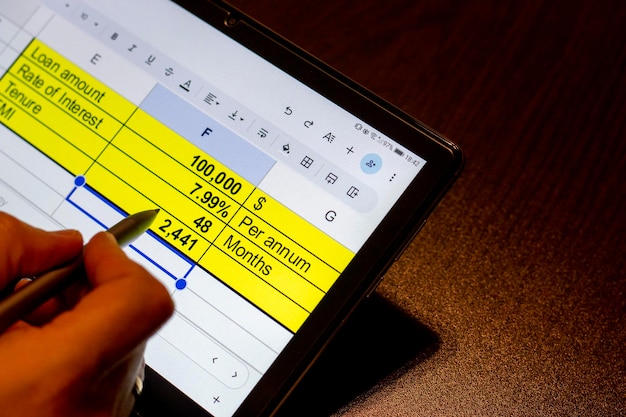Maximize Innovation: Understanding R&D Tax Credits in 2024

Tax Credits for Research and Development: Incentives for Innovation in 2024 are designed to encourage companies to invest in innovation by reducing their tax liability, incentivizing them to pursue cutting-edge projects and technological advancements.
The **Tax Credits for Research and Development: Incentives for Innovation in 2024** are a vital tool for businesses seeking to expand their innovative capabilities. These credits reward companies for their investment in developing new products, processes, or technologies, ultimately driving economic growth and competitiveness.
Understanding the Basics of R&D Tax Credits
The R&D tax credit, also known as the research and experimentation (R&E) tax credit, is a tax incentive provided by the U.S. government to encourage businesses to invest in research and development activities. It’s a powerful tool for companies looking to offset the costs of innovation and drive long-term growth.
Eligibility Requirements
To qualify for the R&D tax credit, companies must meet certain eligibility requirements. The activities performed must constitute qualified research, which generally means they must be technological in nature, address a new or improved business component, and involve a process of experimentation.
Qualifying Research Activities
Qualifying research activities include designing new products, developing new software, improving manufacturing processes, and conducting experiments to test new technologies. The key is that the activities must be aimed at discovering new information or improving existing processes.
- Developing new or improved products.
- Creating innovative software solutions.
- Enhancing manufacturing processes for efficiency.
- Conducting experiments to test new technologies.
The R&D tax credit is not limited to large corporations; small and medium-sized businesses can also benefit. In fact, there are specific provisions designed to make the credit more accessible to smaller companies, such as the qualified small business (QSB) election.
The Benefits of Claiming R&D Tax Credits
Claiming the R&D tax credit can provide significant financial benefits to companies engaging in qualified research activities. These benefits can include reducing current tax liability, generating cash flow, and incentivizing further investment in innovation.
Reduced Tax Liability
One of the primary benefits of the R&D tax credit is the ability to reduce a company’s current tax liability. By claiming the credit, businesses can offset a portion of their qualified research expenses, lowering the amount of taxes they owe to the government.
Cash Flow Generation
In addition to reducing tax liability, the R&D tax credit can also generate cash flow for companies. This is particularly beneficial for startups and small businesses that may be struggling to fund their research and development efforts. The credit can be used to offset payroll taxes, providing immediate access to funds.
Incentivizing Innovation
Perhaps the most important benefit of the R&D tax credit is its ability to incentivize further investment in innovation. By reducing the cost of research and development, the credit encourages companies to take risks and pursue cutting-edge projects that might otherwise be considered too expensive or uncertain.

Calculating the R&D Tax Credit
Calculating the R&D tax credit can be complex, as it involves tracking and documenting qualified research expenses. However, understanding the basic calculation methods and the types of expenses that qualify is essential for maximizing the credit.
There are two primary methods for calculating the R&D tax credit: the regular credit and the alternative simplified credit (ASC). The regular credit is generally more beneficial for companies with a history of research and development expenses, while the ASC is simpler to calculate and may be more advantageous for newer companies.
The Regular Credit
The regular credit is calculated by taking 20% of the amount by which a company’s current-year qualified research expenses (QREs) exceed its base amount. The base amount is generally calculated as the average of the company’s QREs for the prior four years.
The Alternative Simplified Credit (ASC)
The ASC is calculated by taking 14% of the amount by which a company’s current-year QREs exceed 50% of its average QREs for the prior three years. This method is simpler because it only requires tracking QREs for the prior three years, rather than calculating a base amount based on a more extensive history.
Companies can choose whichever method yields the greater credit amount. It’s important to carefully analyze both methods to determine which is most beneficial for their specific situation.
Common Qualifying Expenses for the R&D Tax Credit
Identifying the types of expenses that qualify for the R&D tax credit is crucial for maximizing the benefit of the incentive. Common qualifying expenses include wages paid to employees engaged in qualified research, supplies used in the research process, and contract research expenses.
Wages
Wages paid to employees who are directly involved in qualified research activities are generally eligible for the R&D tax credit. This includes employees who perform hands-on research, as well as those who directly supervise or support the research activities.
Supplies
The cost of supplies used in the research process can also qualify for the R&D tax credit. This includes items such as laboratory equipment, chemicals, prototypes, and other materials that are directly consumed or used in qualified research activities.
Contract Research Expenses
If a company contracts with a third party to perform qualified research on its behalf, the expenses paid to the contractor may also qualify for the R&D tax credit. However, there are specific rules and requirements that must be met, such as the company retaining substantial rights to the research results.
Documenting and tracking these expenses accurately is essential for substantiating a claim for the R&D tax credit. Companies should maintain detailed records of all qualifying expenses and the research activities to which they relate.

Maximizing Your R&D Tax Credit Claim in 2024
To maximize your R&D tax credit claim in 2024, it’s important to understand the latest updates and changes to the tax laws, as well as to implement best practices for documenting and substantiating your claim. Consulting with a qualified tax professional can also be invaluable.
Stay Up-to-Date on Tax Laws
The tax laws governing the R&D tax credit can change from year to year, so it’s important to stay informed about the latest updates and changes. This includes monitoring legislative developments, IRS guidance, and court decisions that may impact the credit.
Document Everything
Thorough documentation is essential for substantiating an R&D tax credit claim. Companies should maintain detailed records of all qualified research activities, including project plans, experimental designs, technical reports, and expense records.
- Detailed project documentation.
- Careful expense tracking.
- Consultation with tax professionals.
Accurate documentation ensures compliance with IRS requirements and strengthens the credibility of your claim.
Common Mistakes to Avoid When Claiming R&D Tax Credits
Claiming the R&D tax credit can be a complex process, and there are several common mistakes that companies should avoid. These include failing to properly document qualified research activities, misclassifying expenses, and overlooking eligible activities.
Poor Documentation
One of the most common mistakes is failing to properly document qualified research activities. Without adequate documentation, it can be difficult to substantiate a claim for the R&D tax credit, and the IRS may disallow the credit.
Misclassifying Expenses
Another common mistake is misclassifying expenses. Companies may inadvertently include expenses that do not qualify for the credit, or they may fail to include expenses that do qualify. Accurate expense tracking and classification are essential for maximizing the credit.
Overlooking Eligible Activities
Companies may also overlook eligible activities when claiming the R&D tax credit. This can occur when companies are not fully aware of the types of activities that qualify, or when they fail to properly identify and document those activities. A thorough review of all research and development activities can help ensure that no eligible activities are overlooked.
By avoiding these common mistakes, companies can increase their chances of successfully claiming the R&D tax credit and maximizing the financial benefits of the incentive.
| Key Point | Brief Description |
|---|---|
| 💡 Eligibility | Must involve technological research and experimentation. |
| 💰 Benefits | Reduces tax liability and incentivizes innovation. |
| 📝 Calculation | Involves tracking qualified research expenses. |
| ✅ Maximizing | Document activities and stay updated with tax laws. |
Frequently Asked Questions (FAQ)
▼
Most businesses, both large and small, that conduct qualified research activities are eligible. The key is that the activities must be technological in nature and aimed at discovering new information.
▼
Examples include developing new products, creating innovative software, improving manufacturing processes, and conducting experiments to test new technologies.
▼
There are two methods for calculating the credit: the regular credit and the alternative simplified credit (ASC). The ASC is generally simpler to calculate and may be more beneficial for newer companies.
▼
Common mistakes include failing to properly document qualified research activities, misclassifying expenses, and overlooking eligible activities. Proper documentation is critical.
▼
To maximize your claim, stay up-to-date on tax laws, document everything thoroughly, and consult with a qualified tax professional who has expertise in R&D tax credits.
Conclusion
The **Tax Credits for Research and Development: Incentives for Innovation in 2024** are a valuable resource for businesses investing in innovation. By understanding the eligibility requirements, calculation methods, and best practices for claiming the credit, companies can maximize their benefits and drive long-term growth.





